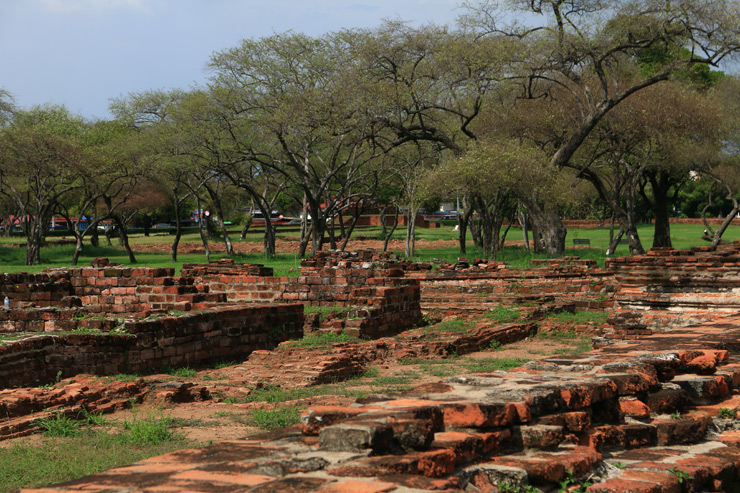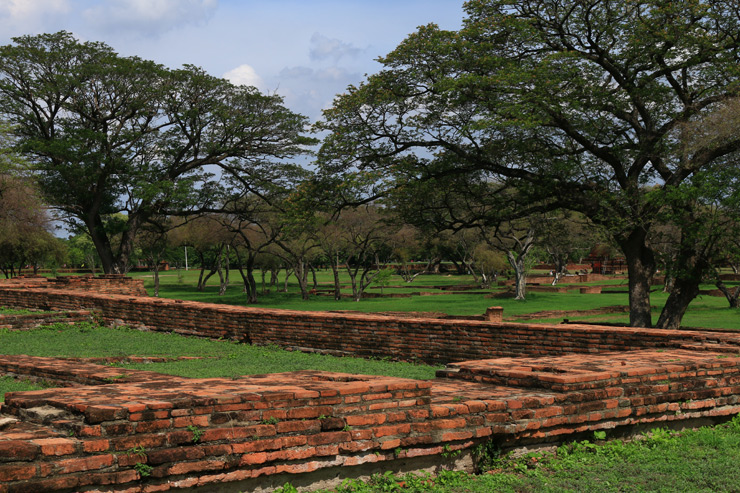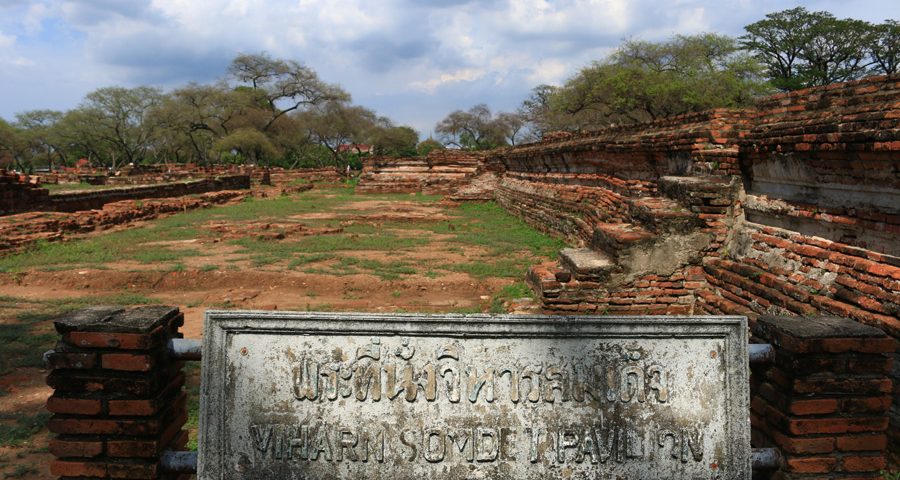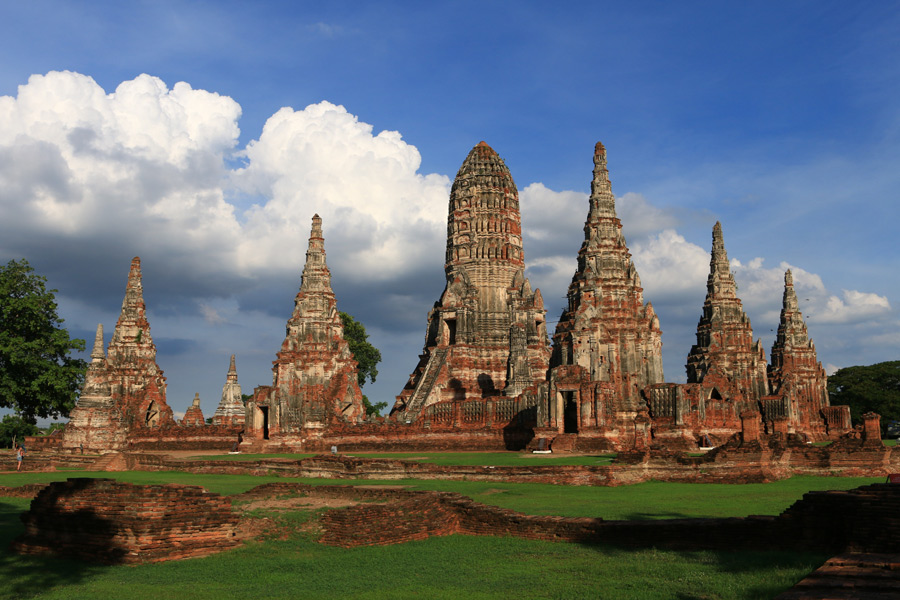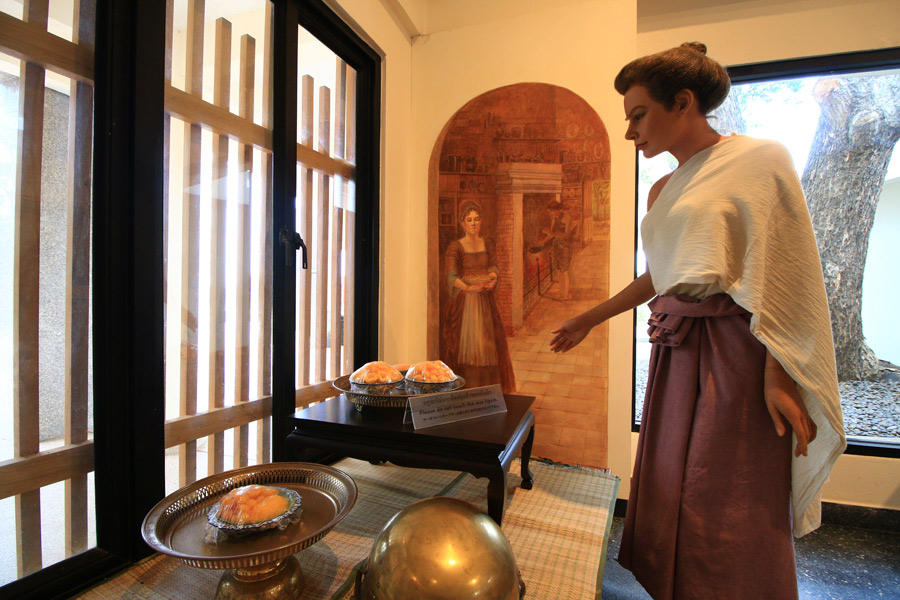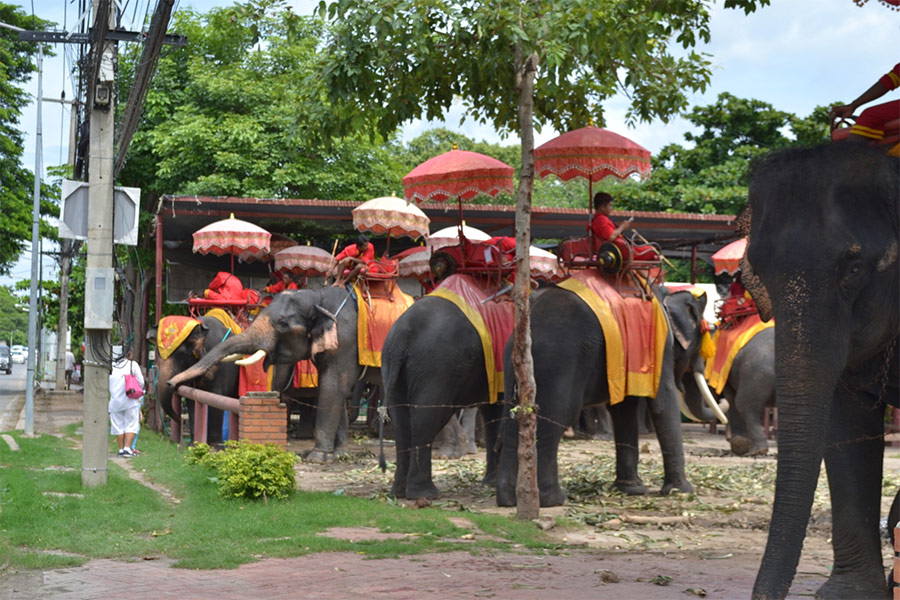
วังช้างอยุธยา ปางช้างอยุธยาแลเพนียด
July 19, 2021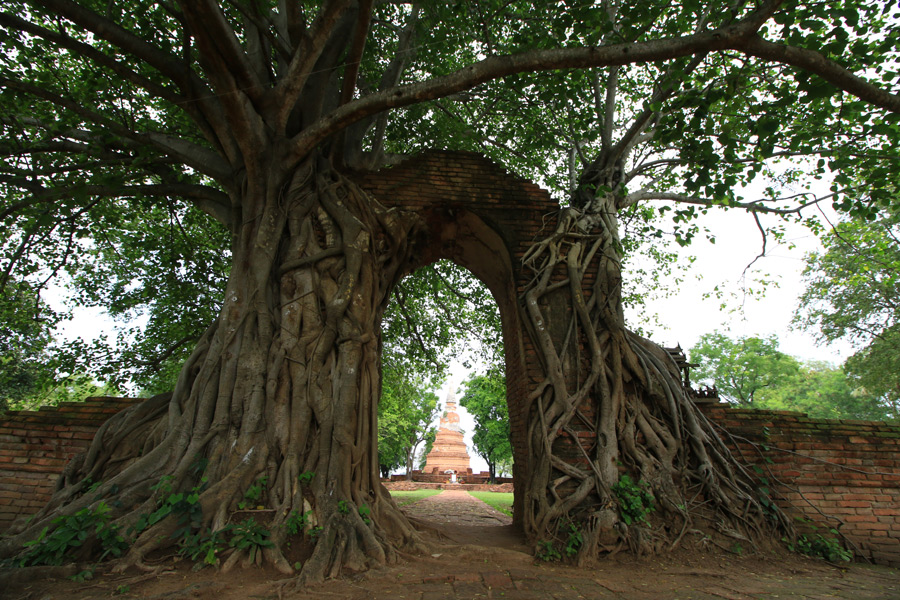
วัดพระงาม คลองสระบัว
July 20, 2021There is not even the ruin left because there are only the bases of the buildings in the royal palace, but these bases are historically significance because they gave the ideas of the structure and plan of the ancient royal palace. Most importantly, the structure of this royal palace is the prototype for the current Grand Palace of Ratanakosin Era.
The most outstanding construction of this ancient royal palace compound is the three-sided pavilion or Tri Muk Pavilion, the original one of which had been destroyed until there was only the base that was remaining, but King Rama V ordered the new Tri Muk Pavilion on the same base to be used as a place to commit the ceremony to worship the former kings of Thailand at the auspicious occasion of the 40th anniversary of King Rama V’s accession to the throne in A.D. 1908, which was as long as the reign of the longest reigning King of Ayutthaya Era or King Borom Trailokanat.
A chronicle stated that King U-thong built the original royal palace in the area of Phra Si Sanphet Temple as the residence of Kings of Ayutthaya, which had been used for 98 years before King Borom Trailokanat moved the royal palace to the north side and assigned the original place as the place to commit religious ceremonies or Phra Si Sanphet Temple.
Later on, King Prasat Thong expanded the area of the Royal Palace and additional throne halls were built in the reign of King Narai the Great. Nowadays, there are only the remaining bases of all constructions.
Opening Hours: There is no closing or opening time; the place can be visited anytime.
Location: On the city island, behind Phra Si Sanphet Temple
